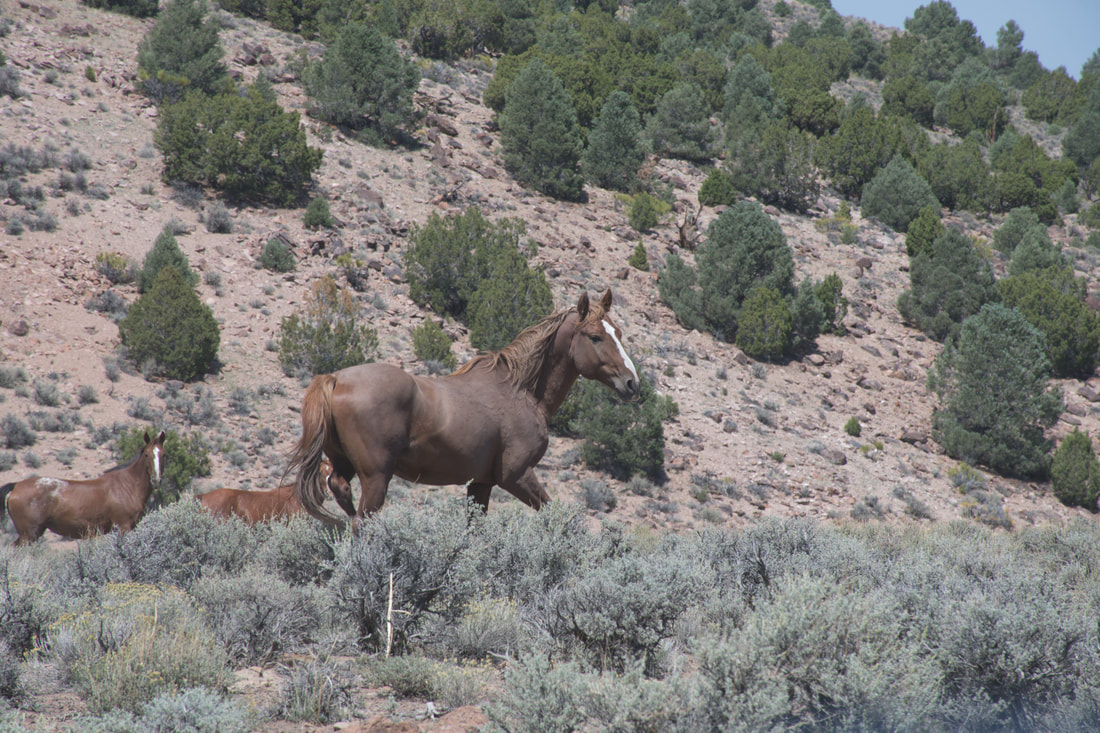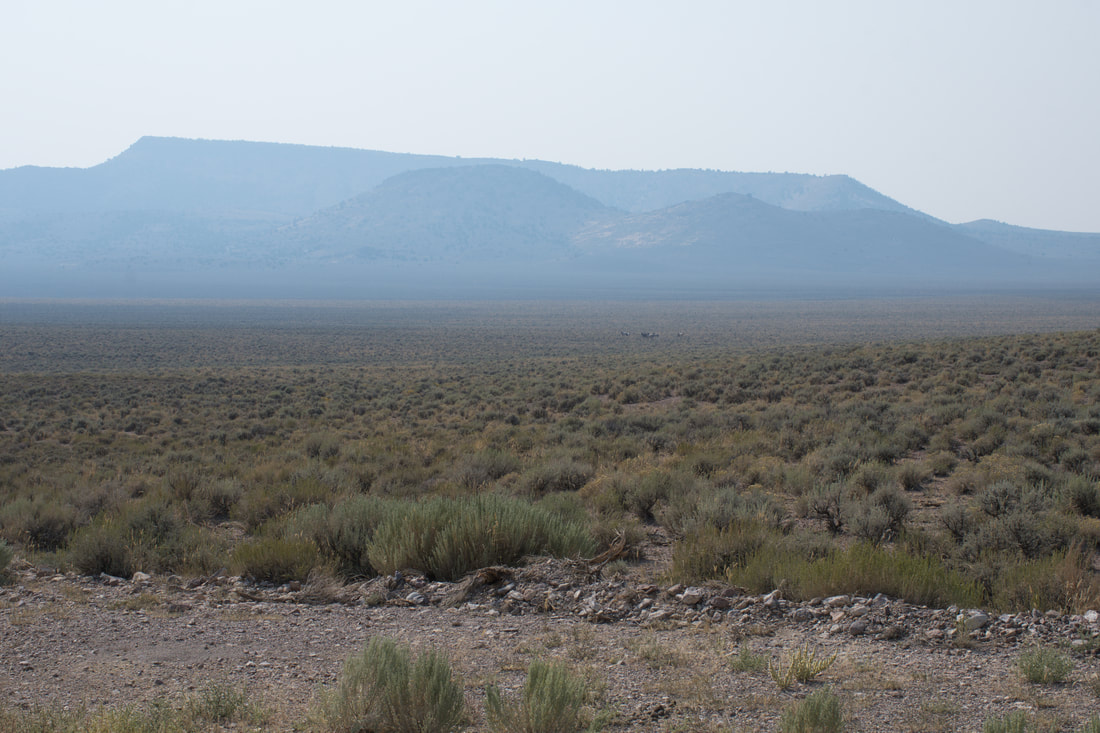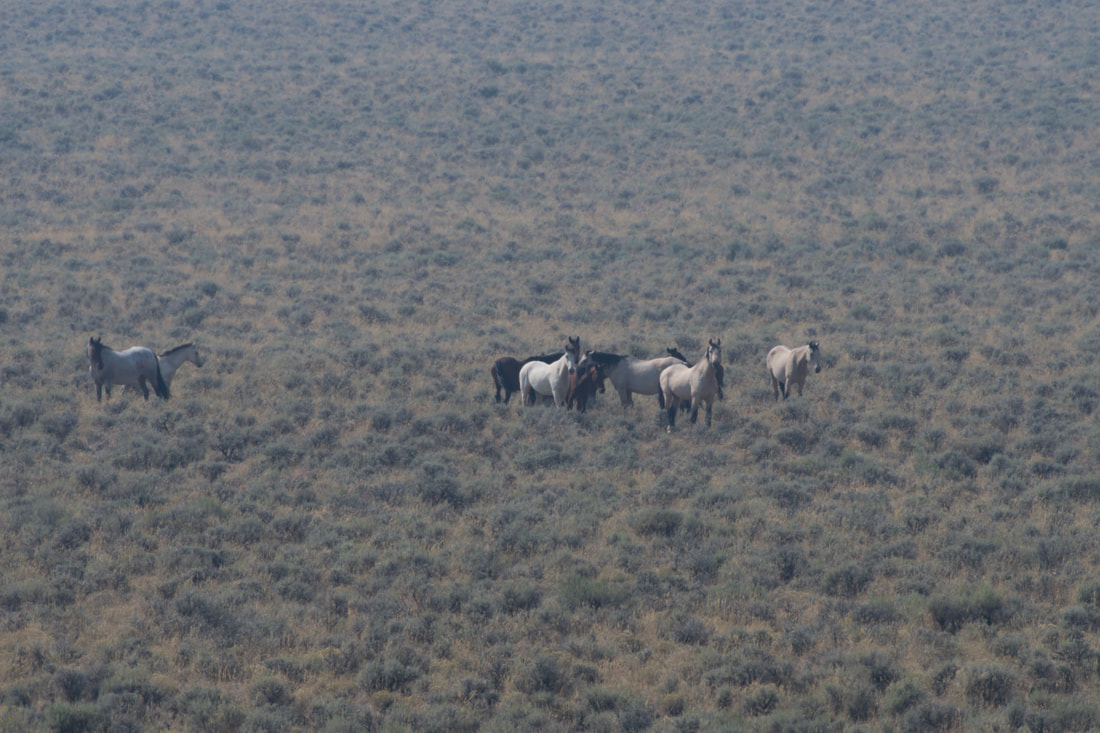|
Flickr album link: Wild Horses ~ Central Great Basin The spring season is when wild horses exhibit behavioral patterns associated with mating, birthing and alpha male dominance, so this is a fascinating time to seek out these animals in the great outdoors. When the heat of summer rolls around, the wild horses tend to roam as smaller groups or individually, which makes spotting them a little more difficult to do. During early summer the mares come out into the open with their fully developed foals and this is a marvelous sight to see. For those who are into capturing images of wild horses, understanding a little something about the annual behavioral patterns will enable better opportunities to bring home a wall hanger photo. This is especially true when seeking a specific shot, like a mare with a foal wandering through the high desert or a herd of horses in a mountain meadow standing their ground while following the directions of an obvious alpha male leader. The human presence also affects wild horse behavior. For example, when food or water is scarce, wild horses can be seen lurking around ranches, farms or small towns. The horses will tolerate the human presence when in need, especially during severe drought conditions. They also tend to be calmer in places where they are used to seeing humans on a daily basis in busy summer season tourism areas, like the Four Corners region. On the flip side, the wild horses that are way out in the middle of nowhere in places where few tourists go are highly wary of any human presence and they will maintain a defensive posture along with plenty of distance from onlookers in order to ensure self preservation. The photos of the Great Basin Desert wild horses in this article definitely were taken way out in the middle of nowhere. For those who know where the Diana's Punch Bowl landmark is located in Nevada, these wild horse images were captured near there. Basically, the wild horses in this region are lucky to see a few dozen humans per year, so they are very wary of any human activity. This makes capturing a great image difficult to do, since all that they want to do is head off in the opposite direction. This part of the Great Basin Desert is also pronghorn antelope country and these animals are even warier of humans than the local wild horses, so it goes without saying that a powerful lens will be needed for ventures in these parts. If you are passing through the central Great Basin on the way to places where very few tourists go, be sure to keep the eyes peeled because there are wild horses to be found!
0 Comments
|
Leave no trace!
New!
Destination West YouTube channel! https://www.youtube.com/@DestinationWestOrg *The Destination West website upgrading project is well underway. Unique YouTube slideshows are replacing the outdated Flickr photo galleries. The new videos feature modern graphics and alternative music instrumentals that enhance the viewing experience. Some articles are being condensed, while others are getting much needed edits. As everybody knows, the bulk of the original articles and photos were published on the fly during the Covid camping venture and there were limitations. Upgrading is the way to go and more articles will receive a makeover each week until this project is completed. After that, I will be able to gather new material. There is light at the end of the tunnel!
JD Lane Archives
July 2024
Donations help the Destinaton West project continue into the future!
Go Fund Me! This website uses marketing and tracking technologies. Opting out of this will opt you out of all cookies, except for those needed to run the website. Note that some products may not work as well without tracking cookies. Opt Out of Cookies |








